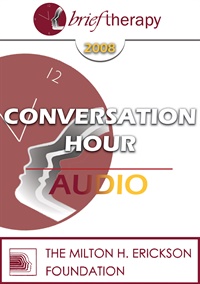
- Average Rating:
- Not yet rated
- Topic Areas:
- Conversation Hours | Art and Creativity | Brief Therapy | Psychotherapy
- Categories:
- Brief Therapy Conference | Brief Therapy Conference 2008
- Faculty:
- Claudio Naranjo, MD
- Duration:
- 1:00:48
- Format:
- Audio Only
- Original Program Date:
- Dec 13, 2008
- Short Description:
- BT08 Conversation Hour 11 - What Makes Therapy Work: Science or Art? - Claudio Naranjo, MD
- Price:
- $15.00 - Base Price
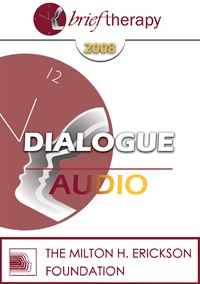
- Average Rating:
- Not yet rated
- Topic Areas:
- Dialogues | Brief Therapy | Meditation, Spirituality and Yoga | Psychotherapy | Therapist Development
- Categories:
- Brief Therapy Conference | Brief Therapy Conference 2008
- Faculty:
- Steven Hayes, PhD | James Prochaska, PhD
- Duration:
- 1:02:15
- Format:
- Audio Only
- Original Program Date:
- Dec 13, 2008
- Short Description:
- BT08 Dialogue 02 - Science, Practice and Spirituality Issues - Steven Hayes, PhD, James Prochaska, PhD
- Price:
- $15.00 - Base Price
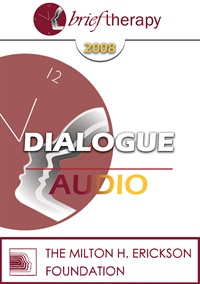
- Average Rating:
- Not yet rated
- Topic Areas:
- Dialogues | Brief Therapy | Psychotherapy | Therapist Development
- Categories:
- Brief Therapy Conference | Brief Therapy Conference 2008
- Faculty:
- Peter Levine, PhD | John C. Norcross, PhD
- Duration:
- 58:33
- Format:
- Audio Only
- Original Program Date:
- Dec 13, 2008
- Short Description:
- BT08 Dialogue 06 - The Psychotherapist's Personal Therapy - Peter Levine, PhD, John Norcross, PhD
- Price:
- $15.00 - Base Price
- Average Rating:
- Not yet rated
- Topic Areas:
- Fundamentals of Hypnosis | Hypnosis | Goals of the Therapist | Psychotherapy
- Categories:
- Brief Therapy Conference | Brief Therapy Conference 2008
- Faculty:
- Michael Yapko, PhD
- Course Levels:
- Master Degree or Higher in Health-Related Field
- Duration:
- 2:47:38
- Format:
- Audio and Video
- Original Program Date:
- Dec 14, 2008
- Short Description:
- Hypnosis can easily be integrated with any brief therapy modality and can be applied in a variety of ways, including: 1) enhancing symptom management; 2) teaching specific problem-solving skills; 3) addressing and resolving underlying conflicts; or, 4) providing perceptual shifts that serve to empower the client. In this section of the Fundamental Hypnosis Track, we will explore the many ways hypnosis can be used in brief therapies, and participants will begin to apply hypnosis strategically for therapeutic purposes in structured practice sessions.
- Price:
- $29.00 - Base Price
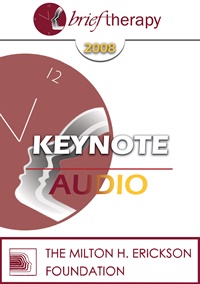
- Average Rating:
- Not yet rated
- Topic Areas:
- Keynotes | Brief Therapy | Children and Adolescent Therapy | Psychotherapy
- Categories:
- Brief Therapy Conference | Brief Therapy Conference 2008
- Faculty:
- Lenore Terr, MD
- Duration:
- 1:18:17
- Format:
- Audio Only
- Original Program Date:
- Dec 11, 2008
- Short Description:
- Between 2003 and 2006 Dr. Terr collected 48 vignettes form 34 child and adolescent psychiatrists describing turning points in young people's therapies. Before the turning point, the child patient had been making progress, at a standstill, or doing poorly. Afterward, he or she changed dramatically for the better. This keynote will present four aspects of these dramatic changes that therapists can easily keep in mind: the therapist's persona; the therapeutic atmosphere; the therapist's correct "read" of the child; and the therapeutic reaction. Many of these moments come with careful planning. But, just as many - or more - develop in a "blink."
- Price:
- $15.00 - Base Price
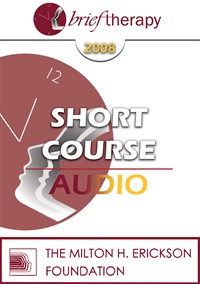
- Average Rating:
- Not yet rated
- Topic Areas:
- Short Courses | Children and Adolescent Therapy | Ericksonian Psychotherapy | Divorce | Psychotherapy | Ericksonian Hypnosis and Therapy Techniques
- Categories:
- Brief Therapy Conference | Brief Therapy Conference 2008
- Faculty:
- Maria Escalante de Smith, MA
- Duration:
- 1:25:05
- Format:
- Audio Only
- Original Program Date:
- Dec 11, 2008
- Short Description:
- Ericksonian psychotherapy emphasizes the utilization of people's resources. When working with children of divorced parents, I focus on strengths and keep in mind the Ericksonian interventions should be brief because children may get tired of being in therapy for a long time. In a case with two children, techniques including the use of toys will be discussed. How to make several brief interventions quickly while utilizing "toy co-therapists" in home assignments, and the combination of conversational trance with tasks will be emphasized. There also will be references to the importance of working with the family system.
- Price:
- $15.00 - Base Price
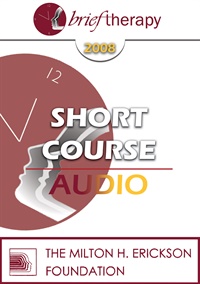
- Average Rating:
- Not yet rated
- Topic Areas:
- Short Courses | Brief Therapy | Neuroscience | Psychotherapy
- Categories:
- Brief Therapy Conference | Brief Therapy Conference 2008
- Faculty:
- Richard Hill, MBMSc, MEd, MA
- Duration:
- 1:33:24
- Format:
- Audio Only
- Original Program Date:
- Dec 11, 2008
- Short Description:
- Recent knowledge breakthroughs in neuroscience and neurophysiology explain why stress and anxiety are increasing despite enormous developments in psychotherapy. The work of Daniel Siegel, Ernest Rossi, Stephen Porges, Aronson & Steele and Jonathan Haidt act as pieces of a puzzle that explain why therapy can fail; and how this "winner/loser world" mindset is an unseen barrier to our more natural creative, interpersonal processes. A new world view is presented that can act as a lasting, transformational brief therapy.
- Price:
- $15.00 - Base Price
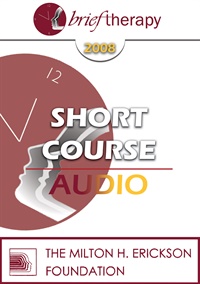
- Average Rating:
- Not yet rated
- Topic Areas:
- Short Courses | Attachment | Experiential Therapy | Psychotherapy | Brief Therapy
- Categories:
- Brief Therapy Conference | Brief Therapy Conference 2008
- Faculty:
- Hanna Levenson, PhD
- Duration:
- 1:01:35
- Format:
- Audio Only
- Original Program Date:
- Dec 11, 2008
- Short Description:
- A model of brief therapy incorporating current developments in psychodynamic, interpersonal, attachment, experiential, and systems approaches will be presented. This approach is designed to be of help with the so-called difficult client who has chronically dysfunctional ways of relating to others. Videotaped segments of actual sessions will illustrate formulation and intervention strategies.
- Price:
- $15.00 - Base Price
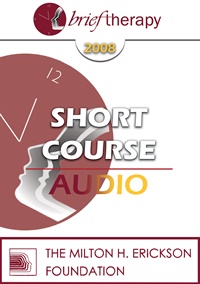
- Average Rating:
- Not yet rated
- Topic Areas:
- Short Courses | Memory | Psychotherapy | Utilization | Brief Therapy
- Categories:
- Brief Therapy Conference | Brief Therapy Conference 2008
- Faculty:
- Joseph Meyerson, MA
- Duration:
- 47:01
- Format:
- Audio Only
- Original Program Date:
- Dec 11, 2008
- Short Description:
- The possibility of utilizing memory plasticity for therapeutic purposes has not been widely recognized, although a number of theoretical and clinical venues during the past century have shown its potential application. This short course is aimed at shedding light on this broad field of hypnotherapeutic interventions and to present a primary map for the clinician interested in the psychotherapeutic implementation of MFI.
- Price:
- $15.00 - Base Price
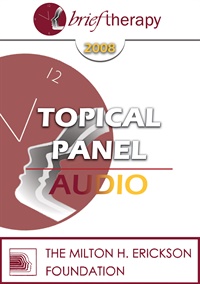
- Average Rating:
- Not yet rated
- Topic Areas:
- Topical Panels | Art and Creativity | Psychotherapy | Brief Therapy
- Categories:
- Brief Therapy Conference | Brief Therapy Conference 2008
- Faculty:
- Steve Andreas, MA, NLP | Scott Miller, PhD | Erving Polster, PhD | Ernest Rossi, PhD
- Duration:
- 58:47
- Format:
- Audio Only
- Original Program Date:
- Dec 13, 2008
- Short Description:
- BT08 Topical Panel 11 - Psychotherapy: Art or Science - Steve Andreas, MA, Scott Miller, PhD, Erving Polster, PhD, Ernest Rossi, PhD
- Price:
- $15.00 - Base Price
Please wait ...


